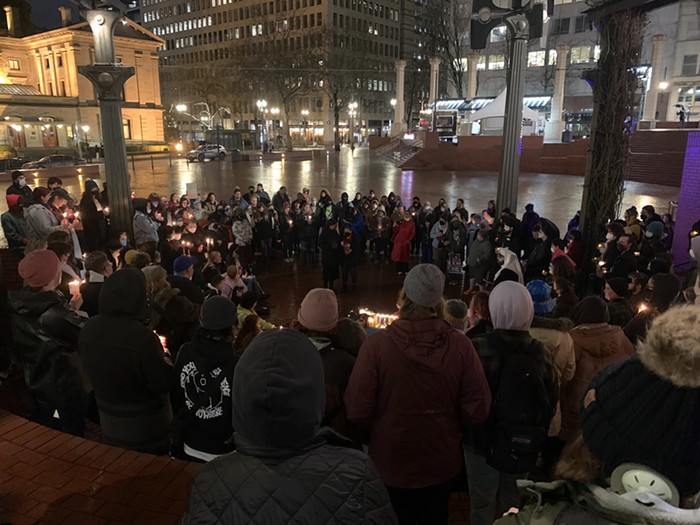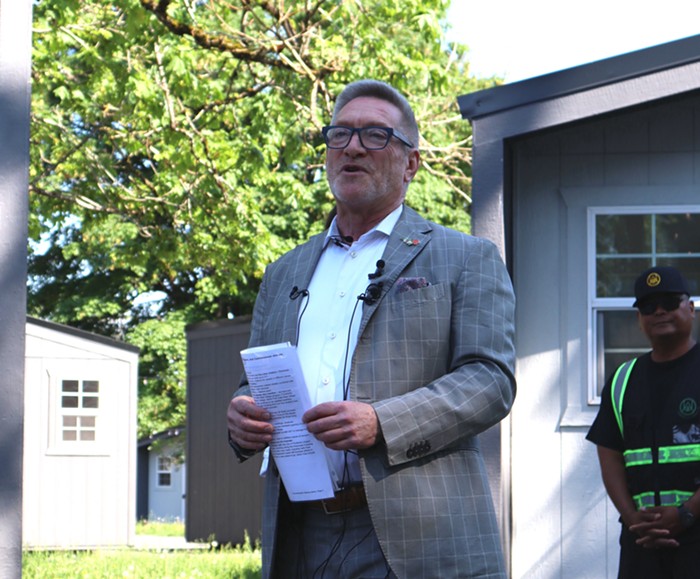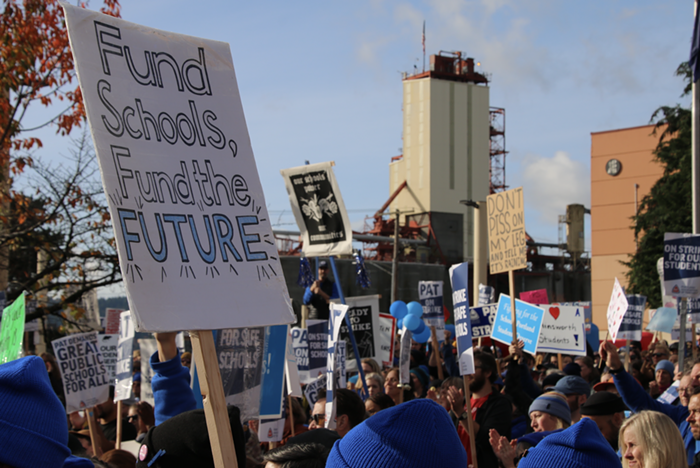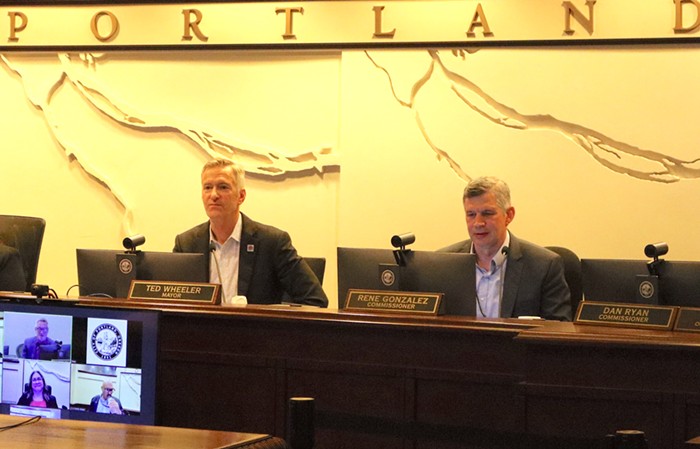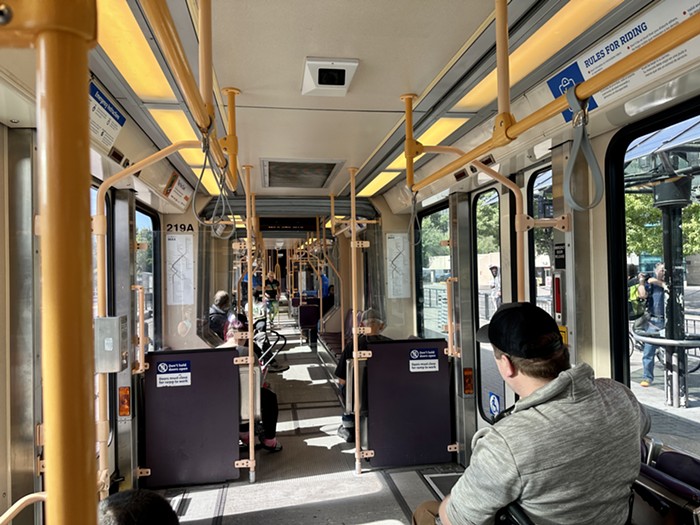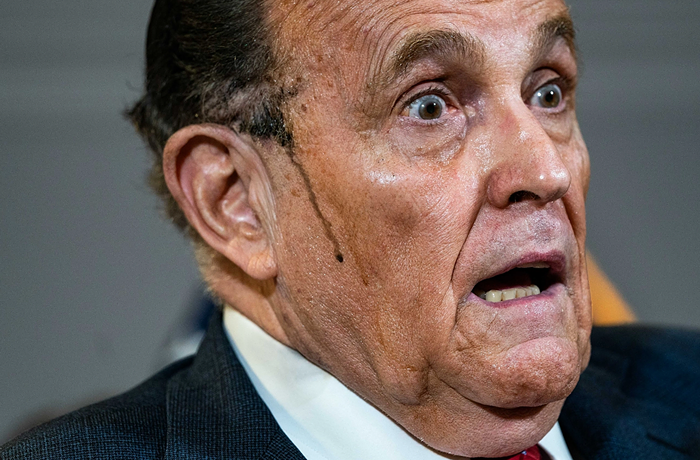
Workers at two Portland institutions—Portland State University (PSU) and Fred Meyer—could go on strike in a matter of days or weeks. In both cases, disputes over wage increases are the driving forces behind the possible labor strikes.
Over the weekend, members of United Food and Commercial Workers Local 555 (UFCW Local 555)—a union representing about 20,000 grocery store employees in Oregon and Southwest Washington—voted to authorize a strike. The union includes workers from Fred Meyer, QFC, Safeway, and Albertson’s, and has been butting heads with employers over wages for over a year.
More than 5,000 classified employees at Oregon’s seven public universities, represented by SEIU Local 503, are also considering striking after receiving a disappointing final contract offer from university management last week. The two negotiation sides recently entered into a month-long “cooling period” during which a strike is not allowed. But workers at PSU and Oregon’s six other public universities are preparing to strike once that period ends, unless university management presents a better offer in the interim.
“We do not want a strike,” said Rob Fullmer, an IT specialist at PSU and an SEIU Local 503 member. “But workers feel disrespected with these offers, and we have to make ends meet.”
While a strike is not yet a foregone conclusion for grocery store or university employees, both cases reflect a desire for higher wages among low- and middle-income Oregonians.
University employees want a fair deal
SEIU Local 503 is made up of classified employees—in other words, university employees who aren’t faculty members or part of the administration. That includes clerical and office staff, IT workers, childcare specialists, kitchen workers, and custodians. In addition to PSU, the union represents workers at Eastern Oregon University, Oregon Institute of Technology, Oregon State University, Southern Oregon University, University of Oregon, and Western Oregon University.
The last time this group of university employees came close to striking was in 2013. Fullmer, who was on the union’s bargaining team then, says negotiations this round have been even more contentious than they were then.
“We actually came within 32 hours of striking or so [in 2013],” Fullmer said. “We were much closer [to making a deal] then than we are in this contract, which is why I’ve been urging everyone to take the possibility of a strike seriously.”
The crux of the disagreement between workers and university management hinges on wages. The union is asking for two cost-of-living wage increases in the next two years (a 3.75 percent increase in 2019, and a 3.5 percent increase in 2020), as well as for new built-in raise opportunities for longtime employees. Management has countered with an overall 2.5 percent cost-of-living wage increase over the next two years, and no new raise opportunities for longtime employees beyond what is already guaranteed in current employee contracts.
“Our members are finding it very hard to make ends meet with those kind of wage agreements,” said Fullmer, “so we’re much less willing to take it.”
Adding insult to injury for university employees is that workers with similar jobs at other Oregon public institutions make more money than they do. University employees bargain separately from other state workers, and according to SEIU Local 503’s own analysis, their workers make 90 cents for every dollar workers in similar public sector jobs earn in Oregon.
Union leadership also says that one-fifth of its membership is eligible for food stamps, meaning their earnings are close to the state poverty line, despite being full-time workers. In Oregon, a single person qualifies for food stamps if they make $16,000 a year or less.
Workers and university management will have two more bargaining sessions during this month-long cool-off period. If they fail to come to an agreement then, a strike is likely. And if that happens, Fullmer says, “it will be very difficult for [PSU] to go about its business.”
Grocery store workers ask for living—and equitable—wage
UFCW Local 555 workers have voted to authorize a strike—but they aren’t yet sure whether a strike will be necessary, or how far-reaching it might be.
As with the university employees, grocery store workers’ main concern is that they aren’t making enough money—and that there’s a glaring gender pay gap among Fred Meyer employees.
The union recently financed a study from an independent research firm, which found that “the median female grocery contract employee [at Fred Meyer in Portland] is paid $13.50/hour… while the median male grocery contract employee earns $17.20/hour.”
According to the study’s analysis, that disparity comes from two different pay raise tracks that Fred Meyer puts its employees into, called Schedule A and Schedule B. After the study was released, Fred Meyer offered an extra 10 cents an hour for its lower-paid, Schedule B workers, the majority of whom are women, according to union spokesperson Kelley McAllister.
McAllister said that increase isn’t enough.
“At this pace, a child born today would be a third of the way through her career before she saw gender equity,” she said. “That’s not acceptable.”
Like university workers, many full-time workers at local grocery stores qualify for food stamps, and McAllister said some union members are homeless, sleeping in their cars or even in their employers’ break rooms.
A decision about whether to strike could be made as soon as this week. Workers and employers will meet for a bargaining session this Thursday, August 29, and McAllister told the Mercury that the employers’ willingness to negotiate, or lack thereof, could decide the workers’ next steps.
“We don’t know yet,” she said. “It’s all going to depend on what happens.”

